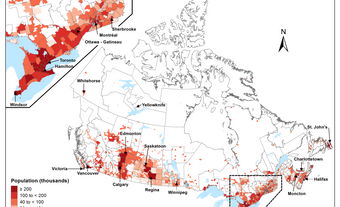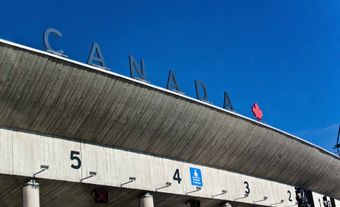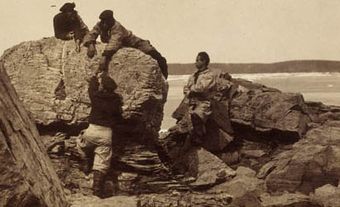Since the Second World War, Canadians have become increasingly urban, living primarily in cities. In an attempt to keep housing affordable, local governments have needed to balance burgeoning borders with urban density. Canada’s ten largest cities offer a glimpse at the many approaches and issues.
All populations are from the 2021 Canadian census and reflect the cities proper, as opposed to the larger census metropolitan area.
1. Toronto: 2,794,356
This megacity was created in 1998, by merging Metropolitan Toronto’s six cities into one. Ontario’s capital city usurped Montreal as Canada’s most populous city in the 2001 census, and hasn’t looked back.
2. Montreal: 1,762,949
Traditionally, Montreal was Canada’s largest city. While its loss of businesses was gradual throughout the 20th century, many left in the 1970s, due in part to the rise of the sovereignty movement and language laws.
3. Calgary: 1,306,784
Calgary is one of Canada’s fastest growing cities, expanding more than 20 per cent between 2009 and 2019. The region stretching from Edmonton south to Calgary is expected to be home to 80 per cent of Alberta’s population by 2046.
4. Ottawa: 1,017,449
When it was chosen as Canada’s national capital in 1857, Ottawa was a small, isolated town. Most of its growth is a result of the Federal Public Service. In 2020, there were 127,092 federal employees in the National Capital Region.
5. Edmonton: 1,010,899
To expand their population, cities traditionally annex neighbouring farmland. Since 1892, Edmonton annexed land more than 30 times, as recently as 2019. The city has also turned to “infill” by increasing building density in existing neighbourhoods.
6. Winnipeg: 749,607
As a city’s population grows it often experiences increased demand on its transit system. Winnipeg is approaching this challenge by testing on-request transit, which uses a smartphone app and GPS to adjust the route of certain buses in real-time. This allows timely service in off-peak periods, one of the big challenges of serving a city.
7. Mississauga: 717,961
Significant examples of increased building density are happening in Mississauga, just west of Toronto. On Lake Ontario, two industrial sites totalling 101 hectares are being redeveloped as new neighbourhoods. North of these sites, one central project is considered the largest mixed-use development in Canadian history.
8. Vancouver: 662,248
In recent decades, foreign investors began actively purchasing residential properties in Vancouver. As prices rose, residents were challenged to find a home in their own city. In 2018, the provincial government introduced a 20 per cent property transfer tax for foreign entities, and the city itself introduced an empty home tax.
9. Brampton: 656,480
Brampton’s population has boomed in recent decades, from 103,459 residents in 1976 to 234,445 residents in 1991. While some of the growth has come from an expansion of urban boundaries in the 1990s, basement apartments (also known as “secondary units”) have played a large role. While there are over 7,000 registered secondary units in Brampton, estimates suggest at least an additional 30,000 to 50,000 unregistered units. Since 2012, all Ontario municipalities must allow and regulate basement apartments.
10. Hamilton: 569,353
By 2051, Hamilton is expected to add about a quarter million new residents. In 2021, city staff recommended adding 1,340 hectares of farmland to the city’s “urban growth area.” Planners received an estimated 19,000 public responses to the proposal. Ontario cities have until July 2022 to expand urban boundaries, or have them imposed by the province.

 Share on Facebook
Share on Facebook Share on X
Share on X Share by Email
Share by Email Share on Google Classroom
Share on Google Classroom




